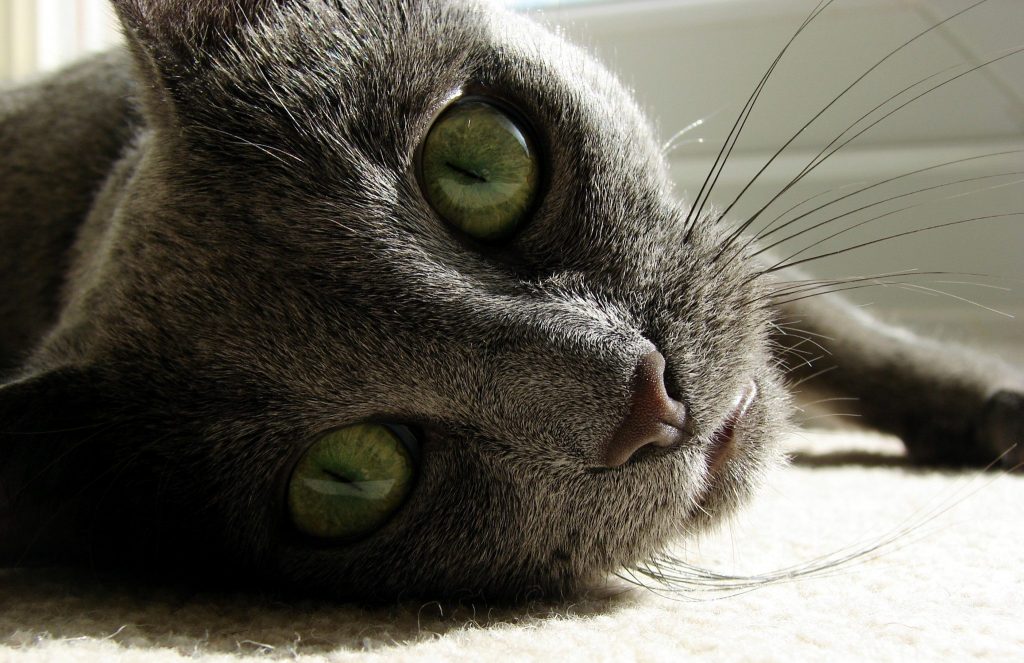Approximatly, 6 million cats are diagnosed with cancer the United States each year, according to The Animal Cancer Foundation. Here are some of the different types of cat cancer, causes, and how to prevent it.
Types of Cat Cancers
Lymphoma – Lymphoma is the most common cancer among cats, according to WebMD. There are various types of lymphoma.
Feline Leukemia Virus or FeLV – Although there is a vaccine for this, the number of cats seen by veterinarians who have been exposed to this cancer is still increasing. Exposure to Feline Leukemia Virus (FeLV) increases your cat’s chances of contracting the disease. FeLV is associated with lymphoma.
Oral Squamous Carcinoma– This is similar to cancer that humans get. A tumor grows in the connective tissue or the muscles.
Injection Site Carcinoma – A tumor called fibrosarcoma occurs around the site of injections
Tumors: Brain tumors, lung tumors, mammary tumors, liver tumors, or nasal tumors are less common that the cancers mentioned above.
These are the most common cancers we see with cats.
Symptoms of Cat Cancer
Cats are not likely to complain much about pain or illness, so you have to be aware of their usual behavior. Any change in this behavior could indicate that something is wrong. Symptoms to look for include:
- Lump or lumps
- refusal to eat or drink
- diarrhea
- swelling
- vomiting
- sores
- weight loss
- skin infections
- lethargy
- difficulty breathing
- bad breath
- any change in usual behavior
By the time you notice these symptoms, the cancer may be severe. Take your cat to the veterinarian or animal hospital immediately if you see any one or more of these symptoms. A biopsy is sometimes required to determine if it is cancer and what type it is.
Causes of Cat Cancer
FeLV spreads from cat to cat through saliva, direct contact and is passed from mother to kitten in utero. Lymphosarcoma is caused by FeLV and is often seen in young cats. Have your veterinarian test your cats regularly for this type of cancer. You also need to get the vaccine for FeLV from your vet. It can save your cat’s life!
More research is required to determine if there are environmental factors, stress factors, and long life factors. There are theories that secondhand smoke affects cats and their self-grooming might bring them in contact with household chemicals.
Cat Cancer Treatments
Prevention is much more important than treatment. Treating a cat with cancer is costly. The same treatments used in humans are used in cat cancers: surgery, chemotherapy, radiation. Cost for these treatments can vary, but they are generally in this range:
- Diagnostics: $500 to $1000
- Surgery: $800 to $2,000
- Chemotherapy: $2,000 to $3,000
- Radiation: $5,000 to $6,000
Most cat owners do not have the financial resources to treat their cats. Costs will vary dependent on the cost of living you your area.
How to Prevent Cat Cancer
Use this checklist to prevent cancer in your cats:
- Spay your female to prevent mammary cancer
- Neuter your male to prevent testicular cancer
- Vaccinate your cats against feline leukemia or FeLV
- Feed a high-quality diet of only cat food. Cats need nutrients provided only by cat food. Some studies show that fatty acids such as EPA and DHA might help in prevention and healing of those who already have cancer.
- Do not overfeed your cat or let them become overweight, as this is a definite trigger for cancer just as it is in people.
- Do not expose your cat to secondhand smoke. Smoke could cause lung cancer in both you and your cat.
- Do not expose your cat to pesticides, insecticides, fertilizers, or other chemicals. This includes most flea collars, which could have chemicals. Ask your veterinarian for safer alternatives to flea and tick collars.Use a harness to go outside with your cat. Otherwise, keep them indoor only.
- Fish oil contains essential fatty acids, Omega 3 and Omega 6 that have shown to have a role in preventing cancer in cats and According to Jean Hofve, DVM they are essential to your cat’s diet. “The term “essential” means that the animal cannot synthesize the nutrient within its body, but must obtain it in the diet. For example, humans and dogs can make Vitamin A out of beta-carotene, but cats must consume Vitamin A directly from their food. Among fatty acids, arachidonic acid is essential for cats but not for dogs; while Omega-3s and Omega-6s are essential for both.”
- Take your cat for an annual checkup at the veterinarian’s office. He will help you prevent cancer in your cats and can answer any of your questions.
Use the checklist presented here so you can prevent your cat from becoming another cancer statistic.
Photo Credit: “Russian Blue closeup”. Licensed under CC BY 3.0 via Wikipedia – https://en.wikipedia.org/wiki/File:Russian_Blue_closeup.jpg#/media/File:Russian_Blue_closeup.jpg










